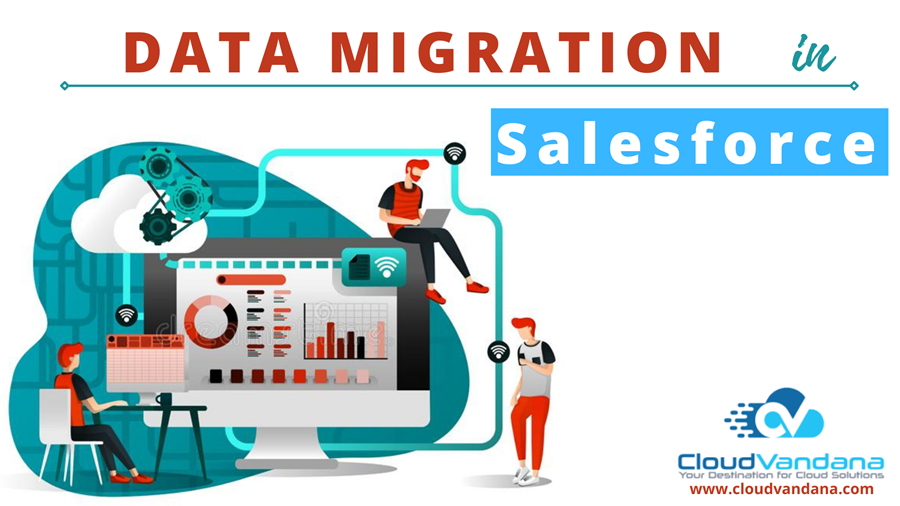Managing a successful Salesforce data migration is one of the most challenging tasks for any Salesforce professional. Data migration is the process of transferring data from one system to another, one location to another, or one application to another. There are many steps involved in the Salesforce data migration process, though the actual transfer is the most complex part.
The basic steps of data migration in Salesforce are-
- Preparation
- Data selection
- Data Mapping
- Migration
- Quality assurance
Data migration might be different depending on the size, format, and accuracy of the source data. Preparation is the most complex phase in Salesforce data migration.
Preparation
The success of the whole migration process depends on the preparation. Good preparation makes it easy to complete the process in an organized manner. So a Salesforce professional should allocate enough time in this phase. The better will be the preparation, the chances are high to complete the process successfully.
Data Selection
In the preparation phase, a Salesforce professional should identify the data to migrate and the data source of truth. The type of processes built-in will highly influence the data selection. Though the Salesforce professional might need additional objects and processes when analyzing the data during migration.
The ‘source of truth’ is an online business is a backend, where customer transactions are directly stored. Though not every kind of business data is stored in the backend. For example, all information related to sales processes is generally stored in a Customer Relationship Management System. Generally, Customer Service agents process service tickets in the same system, but this will not be the same every time. If Customer Service Teams do not work on the same system as Sales agents, some more business data will be found in the customer service tool they use. Other teams can work with different tools too but identifying which data is gathered by which team is a very important thing to be focused on.
As this is very natural to use more than one tool in the business and the Salesforce professional uses more than one source (i.e.different sources of truth for different data categories). A Salesforce professional first needs to identify which data to migrate and where to extract it from, in other words, the specific information the Salesforce Professional needs from each system.
Data Mapping
The next step in the preparation phase is phase is ensuring all records of each source system have a unique identifier. If any of the data categories in one system is related to another one in a different system, the unique ID of the second one is required in each related record. For example, if the Salesforce professional is planning to migrate current customer details from the backend, but the person would also like to import past sales contract information from the previous CRM, every sales contract record in the CRM is required to have a backend ID.
Id IDs are not in place, data cleansing will be needed. It is extremely important that duplicates and outdated accounts are discarded from the migration. Users’ help will be needed at this point as they should be able to fill the missing IDs and specify which data they want to keep.
Metadata from the source systems might be needed at this point so that the Salesforce professional can see how data is structured in every source system. Map Admin tables, fields, and values in the source systems to the different Salesforce objects, fields, and values in the new Salesforce instance. The more unique and higher the number of source systems, the more complex the data mapping process will be there.
Migration
The second phase involves the transfer of data from the source system to Salesforce. The selected migration method mainly depends on the type of resources available, the volume of records needed to import into Salesforce, the complexity of the source data, and the distance between the source data and the Salesforce data model. The amount and the expected complexity of the data transformation will also determine the transfer method.
Quality Assurance
Once the data gets transferred to Salesforce, the Salesforce professional needs to ensure that the process has been transferred successfully.
If the quality assurance test result is not successful, the operator needs to find out the error. If errors are found in the preparation stage, the Salesforce expert needs to repeat the whole process.
Conclusion
Salesforce data migration is a complex process and every step is unique. The key has a good understanding of the source systems and data structures. The reason for conducting a migration procedure into a new Salesforce instance is variable and might give a hint on which data is needed to extract from where. A professional or an organization can migrate from a different CRM into Salesforce because Salesforce is the best CRM for a scalable process. Finding out the trustworthy source data where it should be stored and mapped to the Salesforce data model can be tough, but a good preparation phase and a trustworthy Salesforce partner like CloudVandana are the keys to success.










